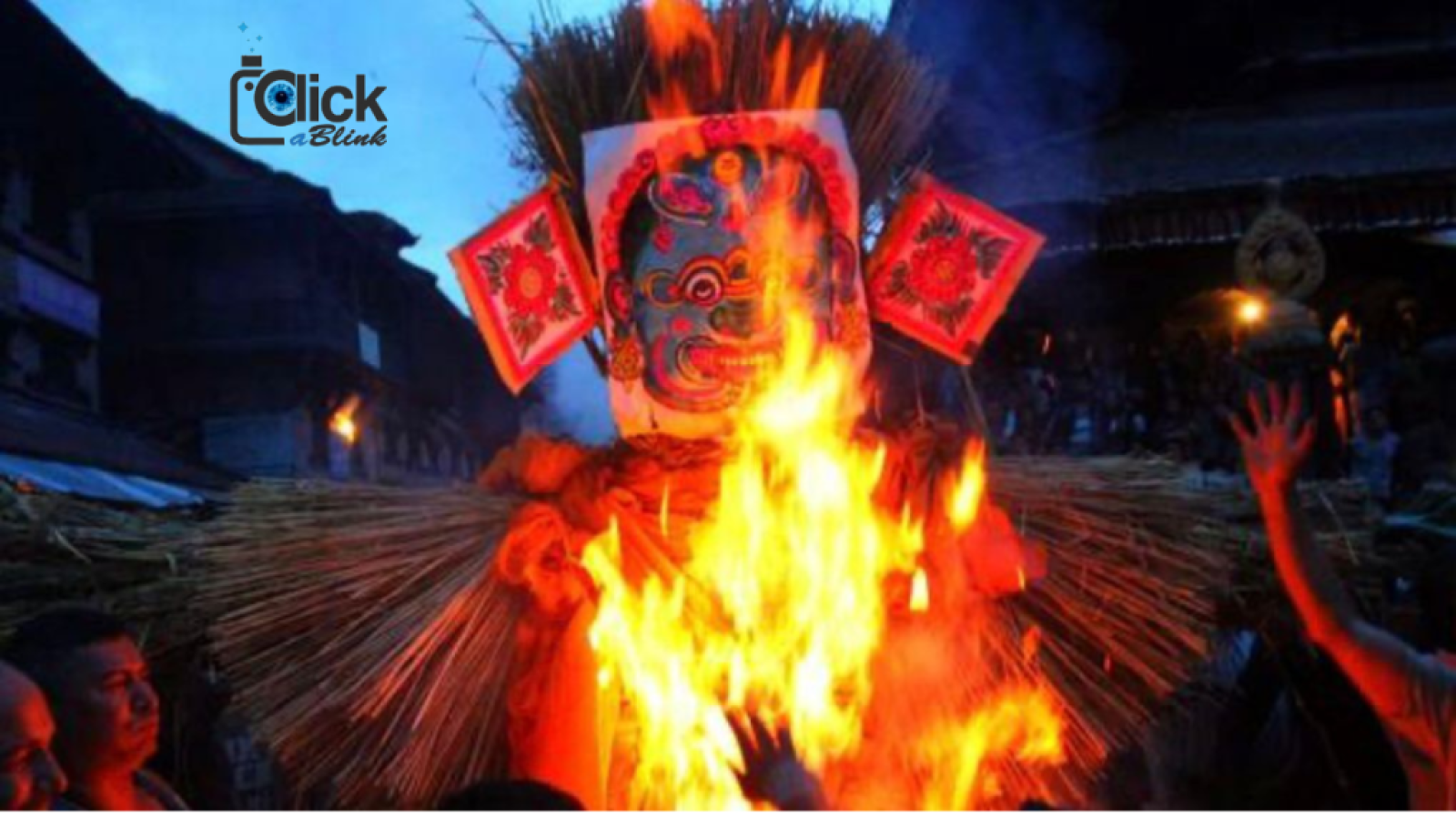Gathemangal: Festival of courage and community

Gathemangal, also known as Ghantakarna Chaturdasi, is a unique festival celebrated in the Newar community of the Kathmandu Valley. This vibrant festival falls on Shrawan Krishna Chaturdashi, typically in June or July. It is a day filled with colorful traditions, mythic tales, and a powerful message of overcoming evil with good.

The festival centers around the legend of Ghantakarna, a fearsome demon who spread terror and chaos among the people. To battle this danger, the Newar community crafts models of Ghantakarna from bamboo, decorating them with bamboo leaves and nanglo (bamboo plates) for the face, complete with bells to signify his ears. These models are paraded around the city before being ceremoniously burned and dispose of in nearby rivers, symbolizing the community’s triumph over evil.
The origins of Gathemangal are still a mystery, but it is believed to date back to the Lichhavi era. One popular story recounts how a clever frog managed to lead Ghantakarna into a swamp where he drowned, freeing the people from his reign of terror. This act of bravery by the frog is celebrated with great enthusiasm, highlighting the festival’s theme of cleverness and courage in the face of adversity.

On this day, people wear iron rings made by Nakarmis (Newars who traditionally work to make iron equipment) to protect themselves from evil spirits. Homes are cleaned and adorned with cow dung and various plants to purify and ward off negativity. A special Newari food called Samaybaji, a mixture of beaten rice, ginger, black soybeans, chhoila, potato, and garlic, is prepared and enjoyed with family and friends.
Gathemangal is not only about driving away demons but also about fostering a sense of community and shared heritage. Children play a significant role, in creating their own Ghantakarna idols and collecting donations from passersby. If someone refuses to donate, the children humorously label them as descendants of the demon, adding a playful element to the festivities.

In the evening, the models of Ghantakarna are taken to riverbanks or crossroads and burned, signifying the victory of good over evil. A man dressed in a blue robe, representing Ghantakarna, collects alms from houses, reinforcing the festival’s spirit of generosity and unity.



